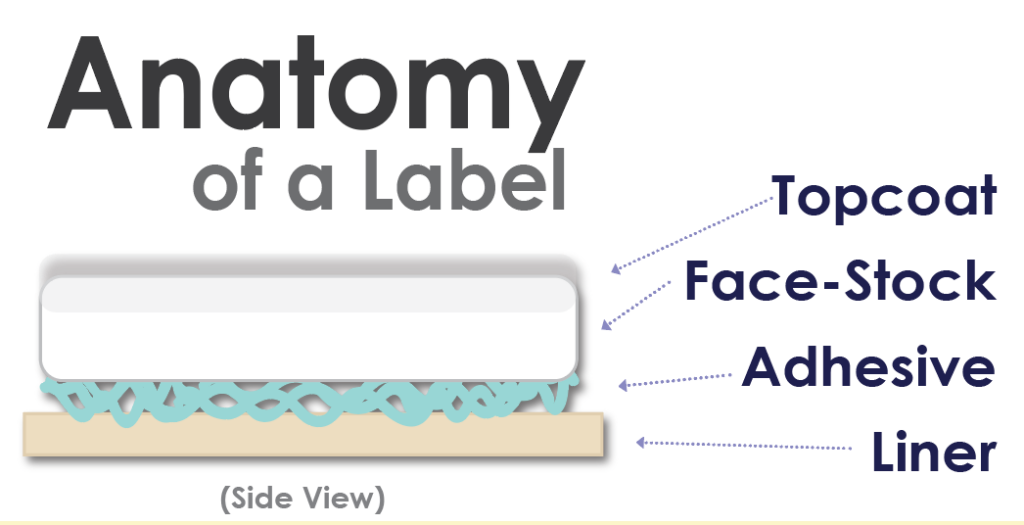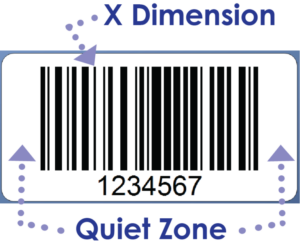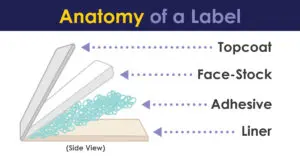Sad, but true, most humans walk on flooring but don’t really pay much attention to why it’s there. There are wood floors, ceramic tile, vinyl floors, carpet… the list goes on and on.
The same thing holds true for label liners. Label liners (aka backings, carriers or release liners) tend to be overlooked and yet without them there would be no way to present die cut labels. Just like a red carpet, liners hold labels to transport them through converting and on to printers and automatic application equipment. Liners are critical to the die cutting of labels in all shapes, sizes and formats like multi-part labels. Without liners you would be left to use only a limited selection of linerless materials such as tags, receipt papers and a very few self-wound materials that have a unique adhesive much like scotch tape that doesn’t gum up the face of the labels. Linerless labels or tags can only be made with perforations between labels or be butt cut when they come out of a printer to present square cornered labels.

Most importantly, liners serve to protect the label adhesive until it is applied to the end use surface. Since there are all sorts of adhesives, it is important to use the right type of liner engineered to the adhesive and to make sure the labels properly release.
Liner construction is simple; it consists of a basic carrier most commonly made of paper or polyester (PET) to which a layer of silicone is added. The specific amount of silicone determines how well the labels will peel off the carrier and the specific release values and coat weights are based on die cutting and dispensing requirements. Liners are further broken down into roll form and sheet form products.
In choosing a liner, one looks at its thickness, smoothness, strength, its lay flat characteristics, and how well it die cuts and dispenses. Some liners are even made to allow for what we call “back printing” on the reverse side of the liner.
Types of Liners
| Roll Form | Glassine Paper¹ | Poly Coated Kraft Paper² | Sheet Form Kraft Pape | PET³ | |
| Thickness (Avg.) | 2.5 – 4.6 mil | 2.2 – 3.1 mil | 3 – 8 mil | 4.6 – 12 mil | 1 – 4 mil |
| Smoothness | Good | Very Good | Very Good | Very Good | Superior |
| Strength | Good | Very Good | Very Good | Very Good | Superior |
| Die Cutting | Good | Very Good | Very Good | Good | Superior |
| Dispensing | Good | Very Good | Very Good | N/A | Superior |
| Layflat | Fair | Fair | Good | Very Good | Excellent |
| Sheeting | N/A | Poor | Good | Very Good | Excellent |
| Backprinting | Very Good | Varies | Vries | Varies | Fair |
| Cost | Low | Low | Medium | Medium | High |
¹ Glassine liners are harder than standard paper liners so they die cut very well but they can be brittle.
² Poly-coated papers provide an excellent moisture barrier.
³ PET is good for clean room applications as it presents little to no dust particles.
In general, EIM doesn’t make a big distinction in label specifications about the label liners we use, but if there are specific characteristics not appropriate for certain types of label formats, we will make note of those exceptions. For examples, some liners are not good for fan-folding while others may not be good for auto apply applications.
One thing we have learned: When removing labels from a liner, the natural instinct is to peel the label up from the liner—HOWEVER—the best way is just the opposite. To avoid weakening the adhesive, it is best to peel the liner from the label. A curl is created in the label if you peel the wrong way and that curl may eventually lead to the label edges lifting from the application surface. In fact, this is one of the reasons automatically applied labels tend to work so well; the liner is peeled from the label.
While our guide may be useful, nothing can replace speaking 1-on-1 with one of The Label Experts. We can offer assistance to answer your custom labeling needs. Before consulting with us, check out this page and our complementary Getting Started guide to help steer you in the right direction. The more info you know about your application, the quicker we can match you to the right product. We are excited to assist you and help come to a solution for your unique labeling needs.




